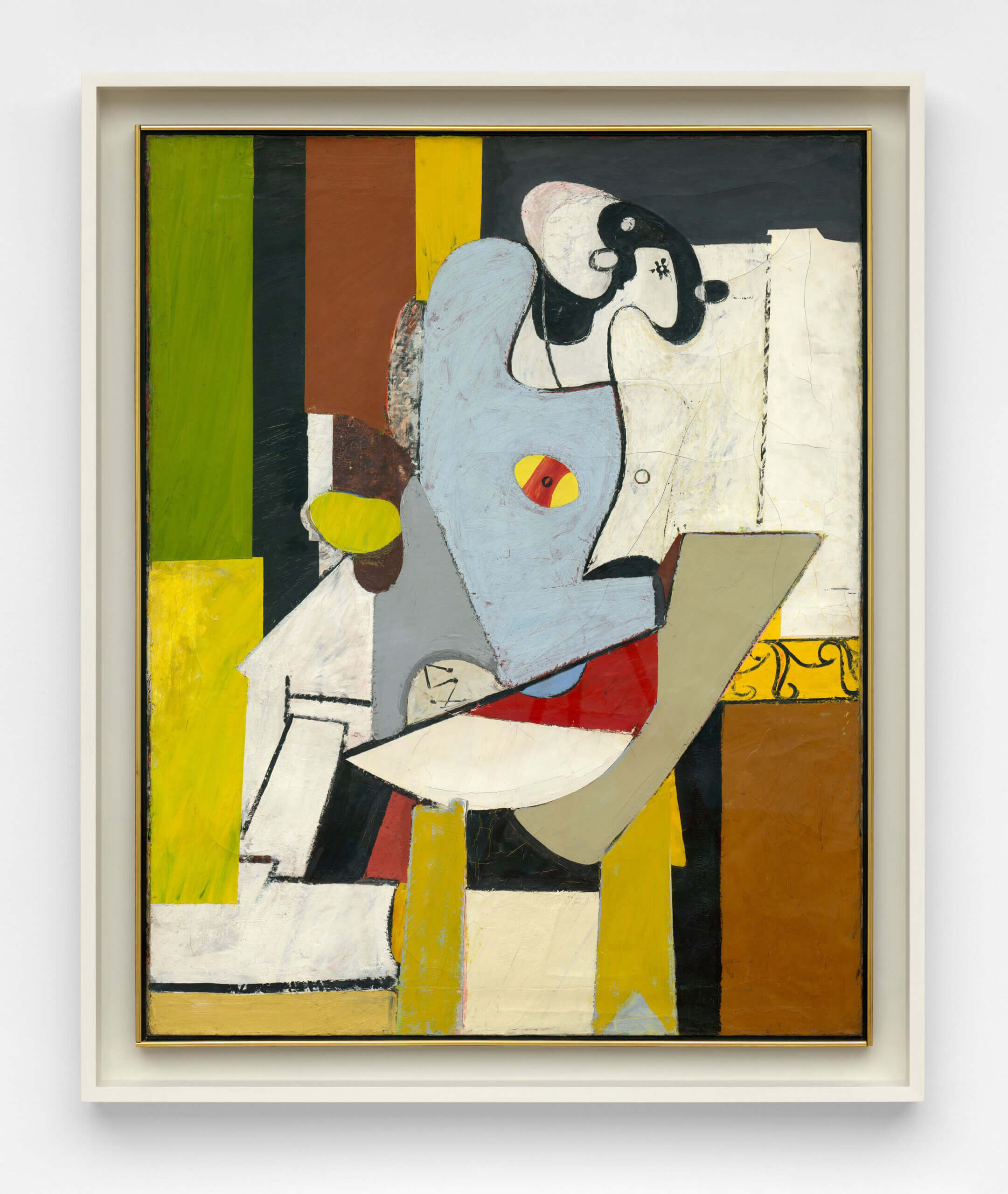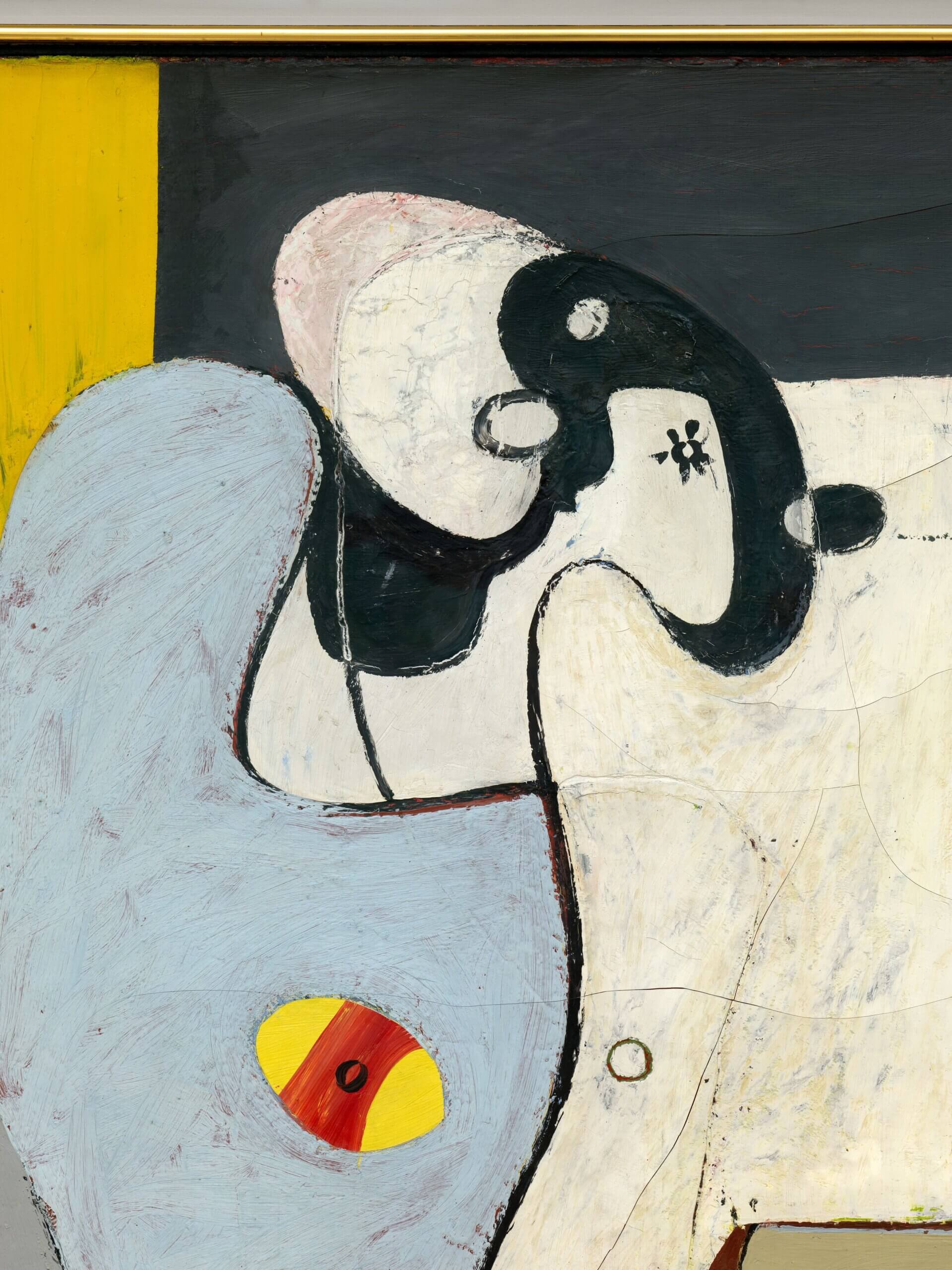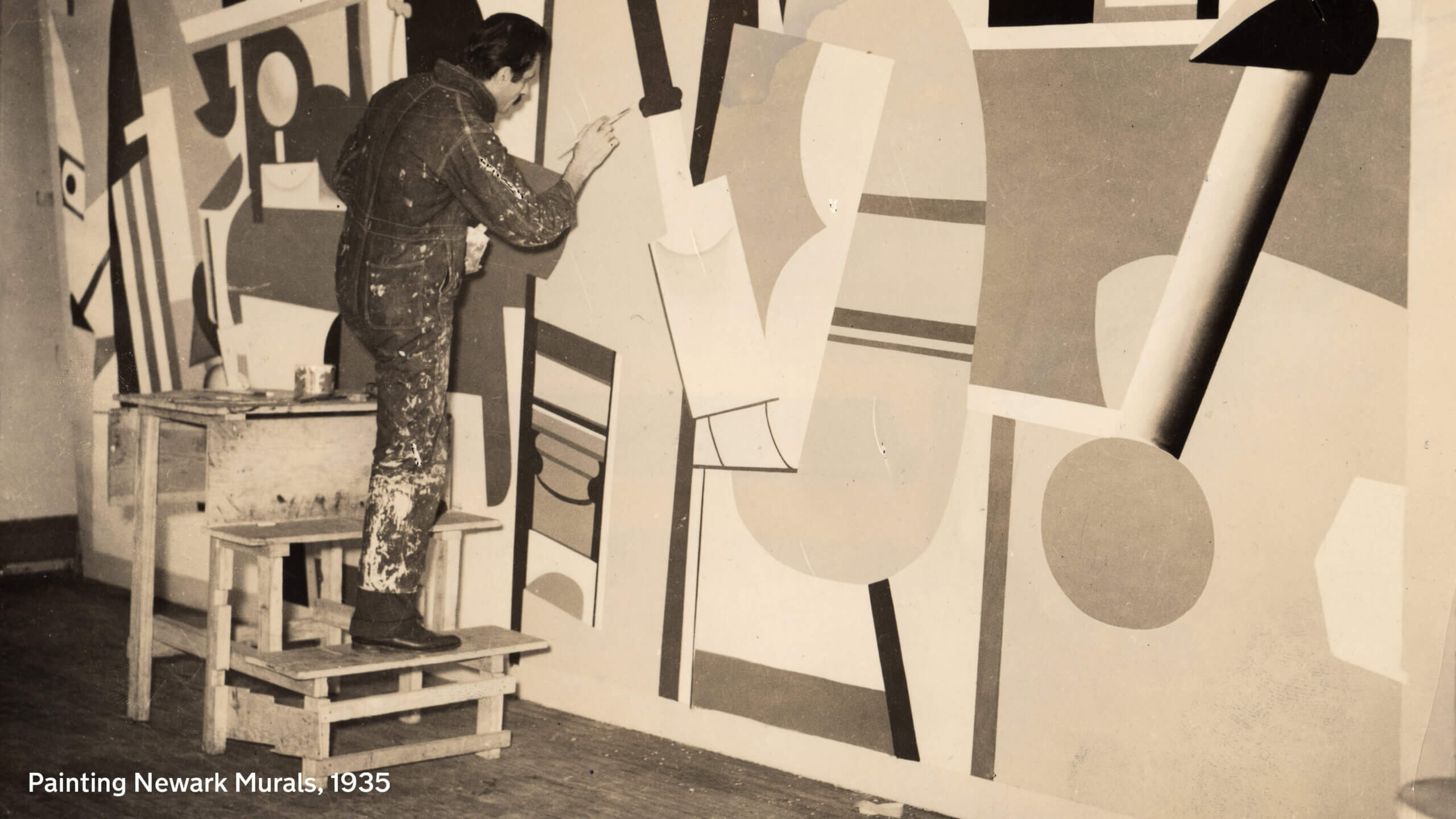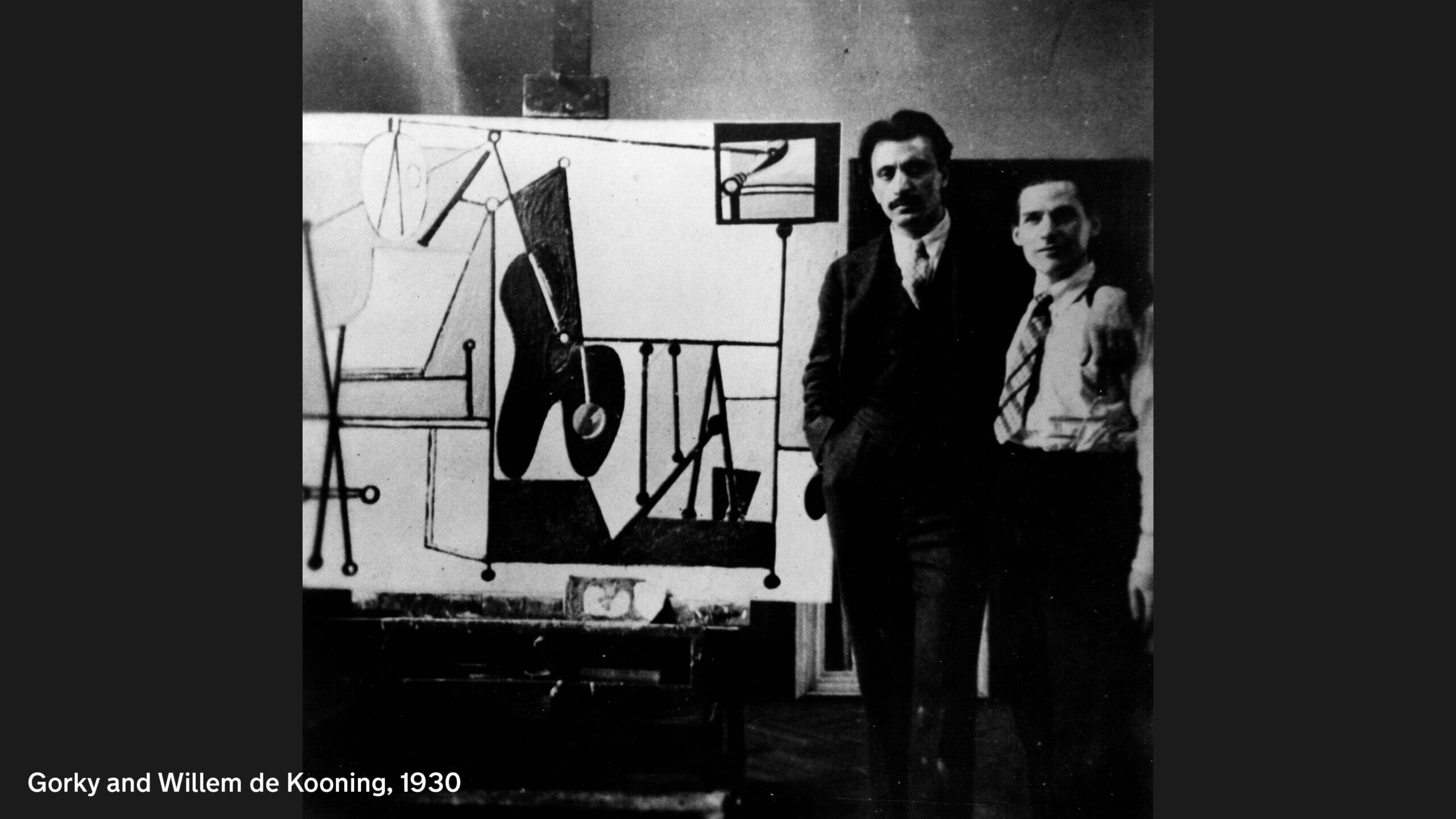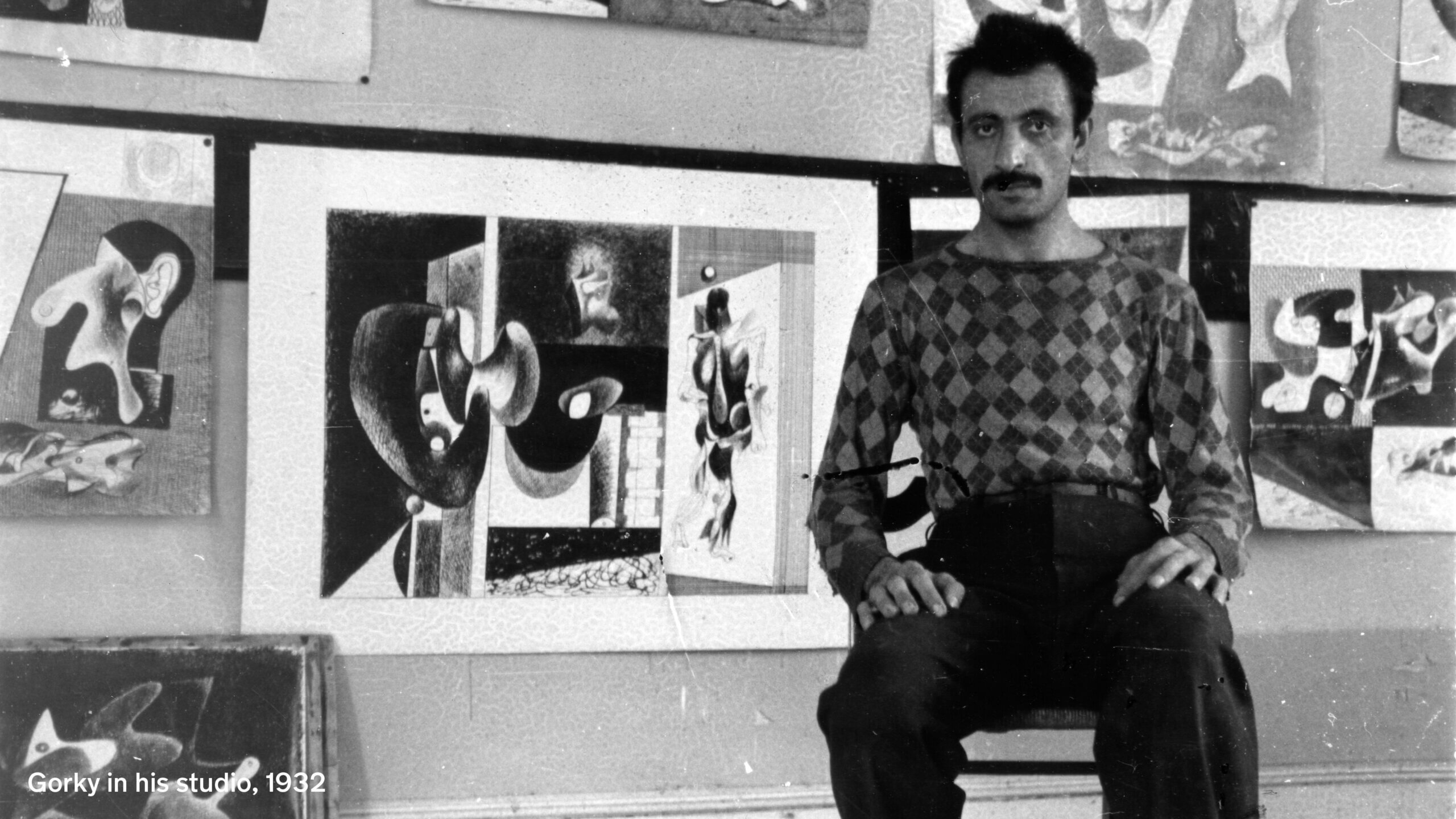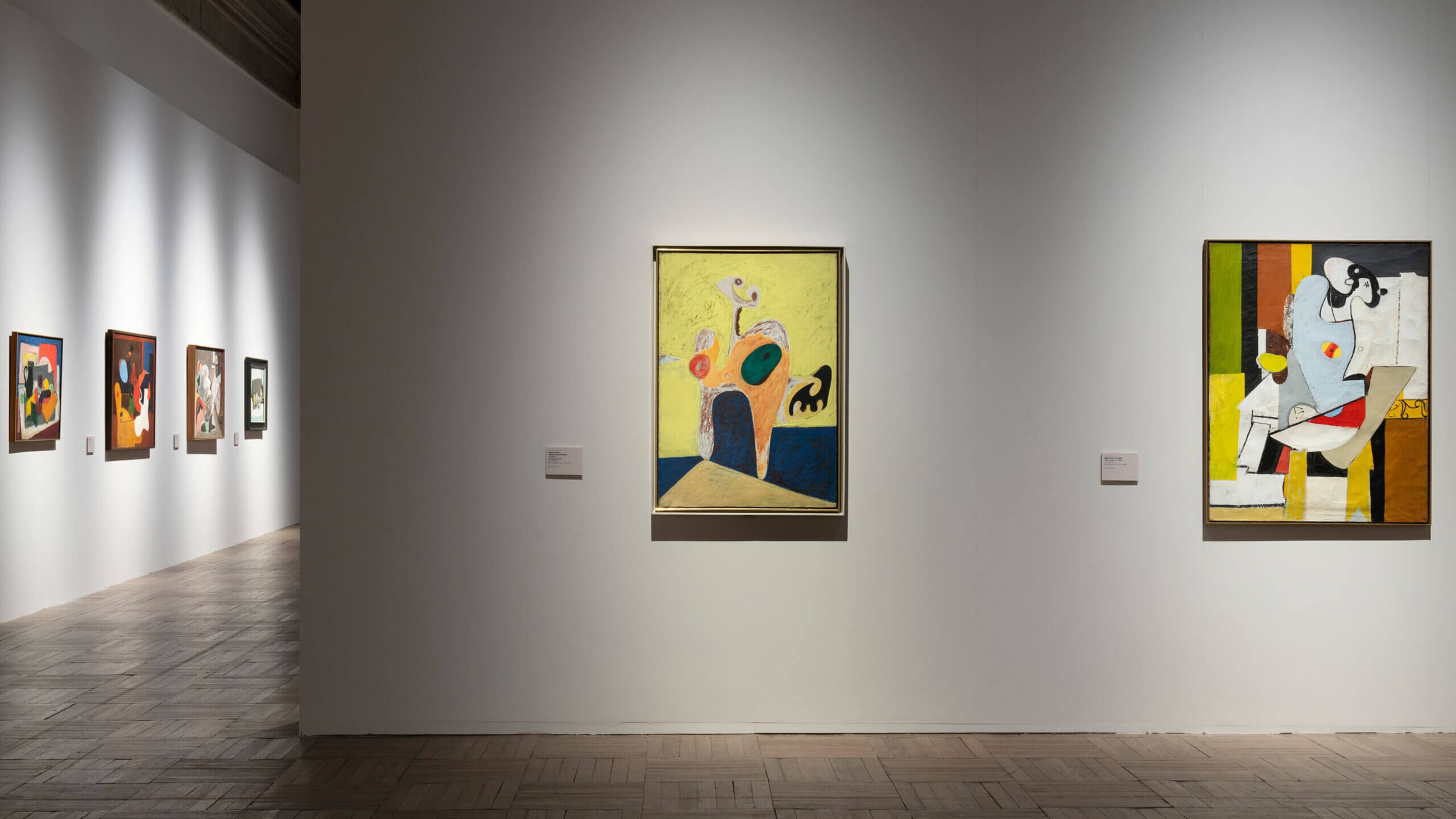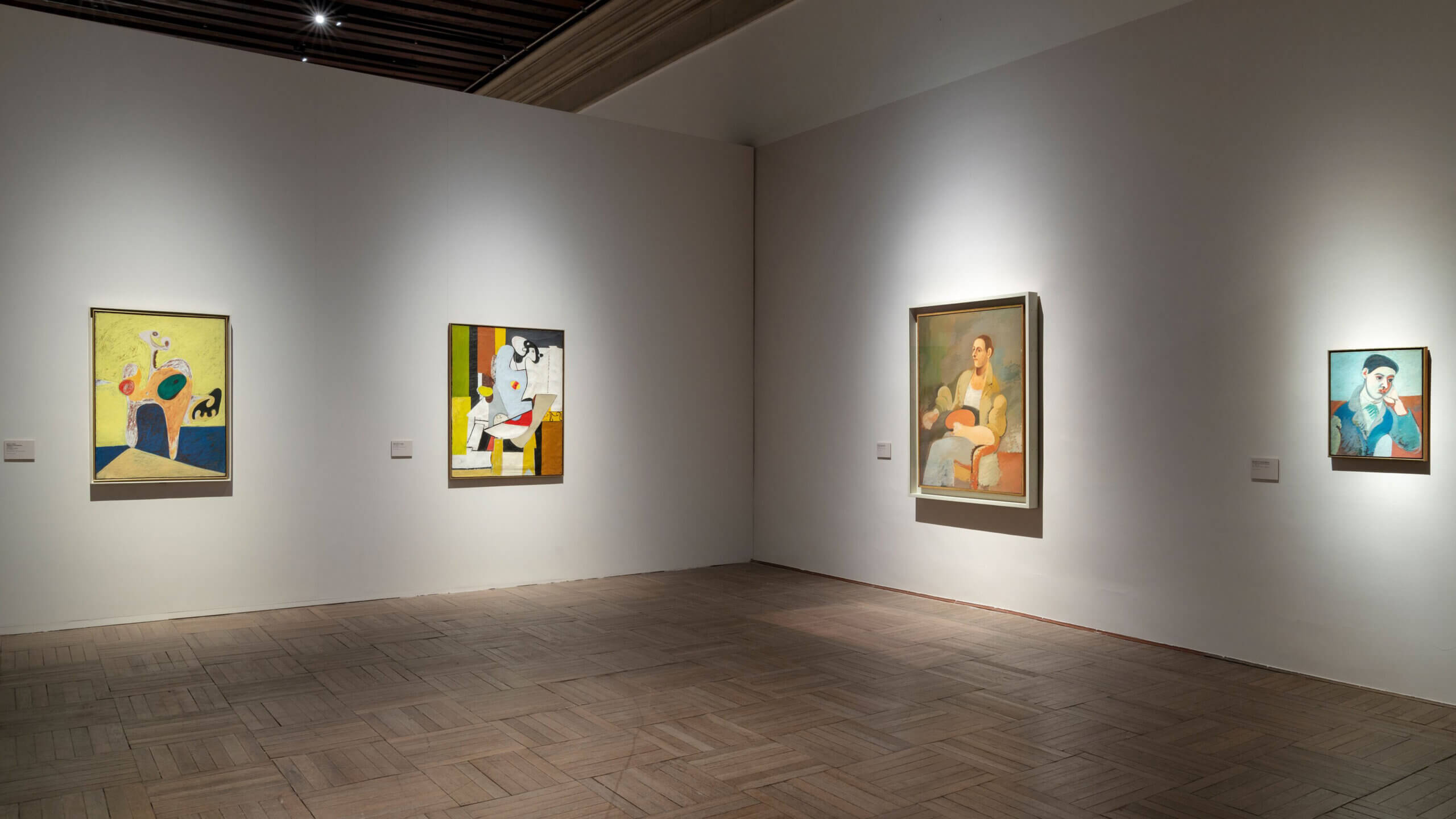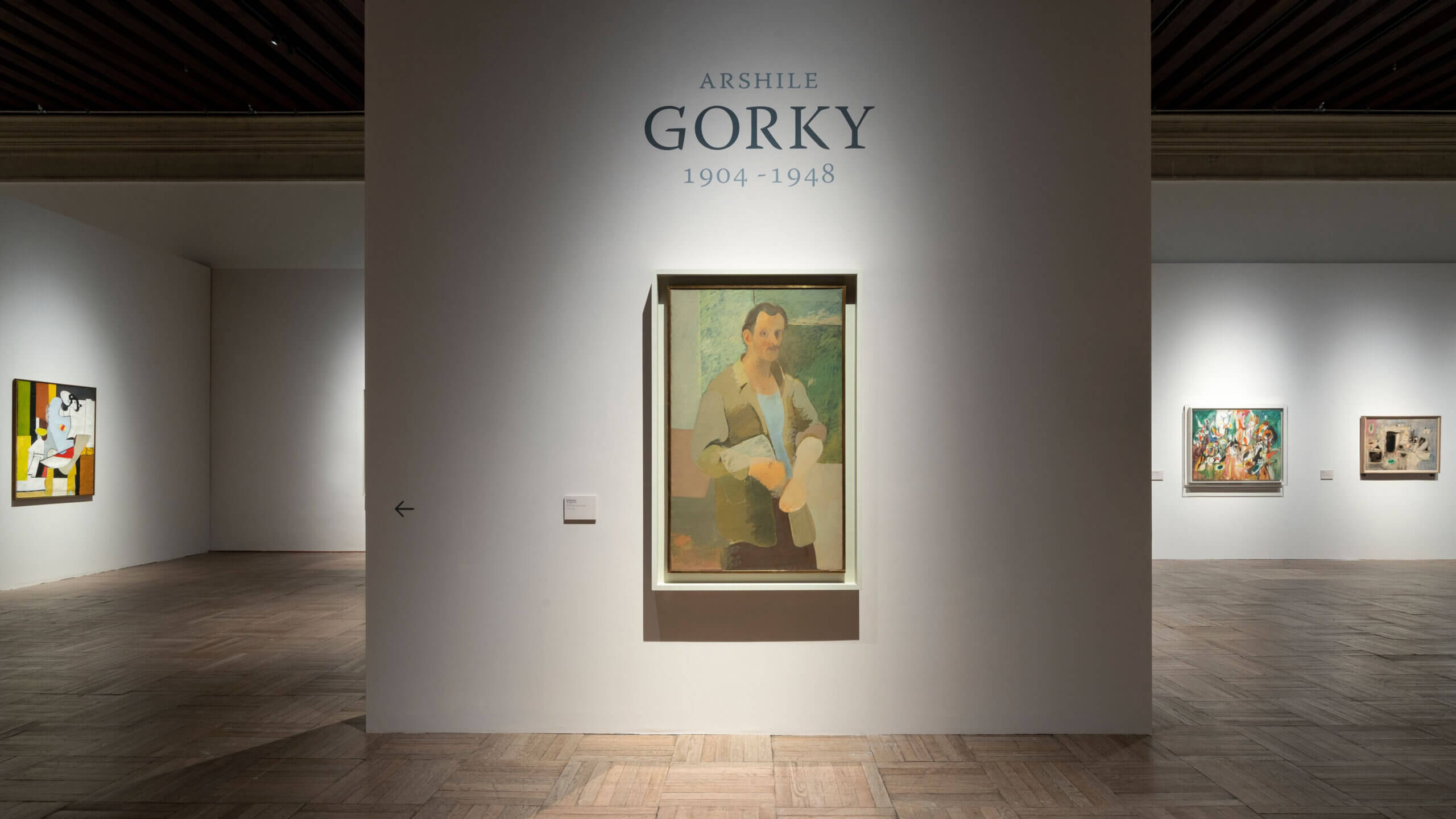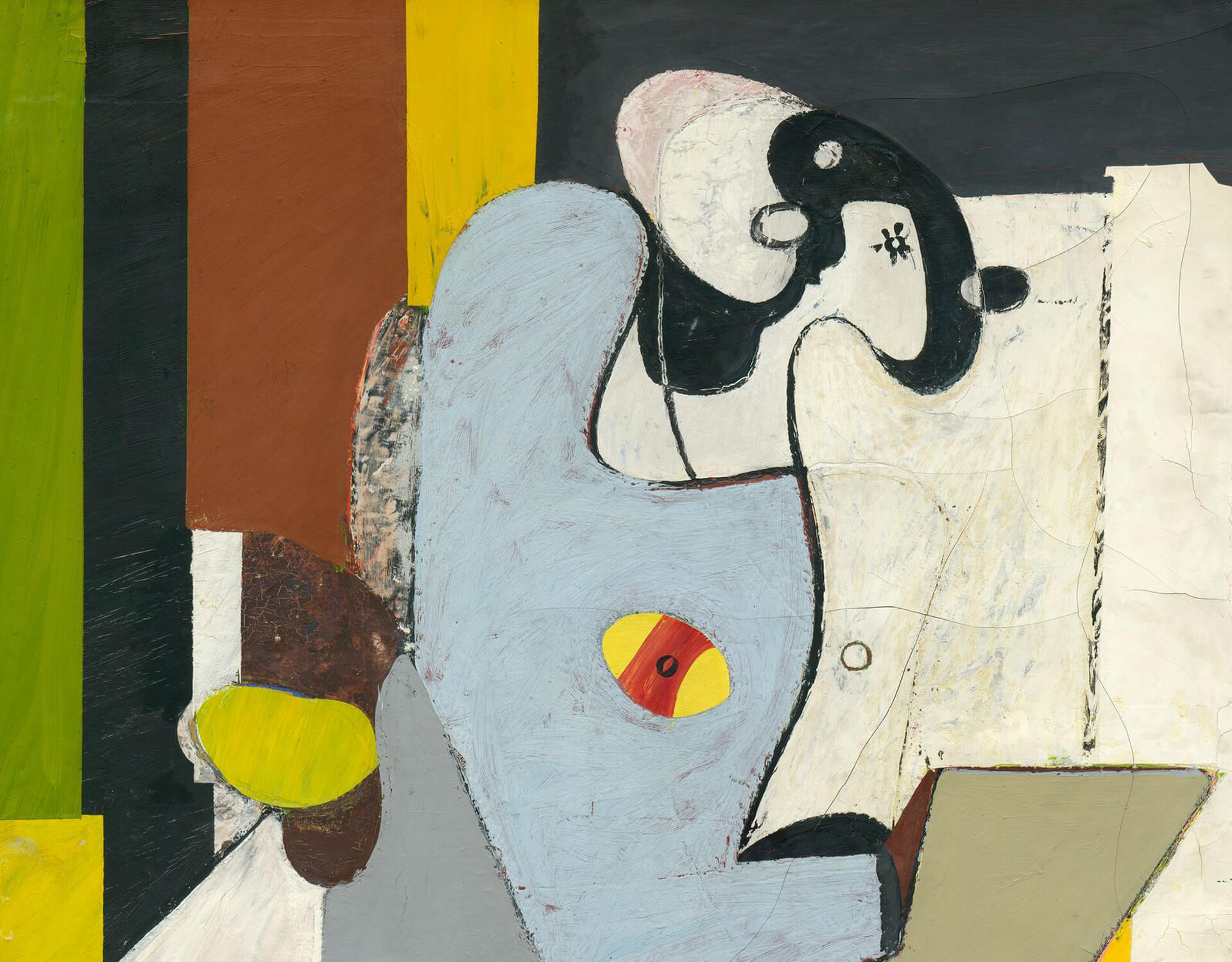
Arshile Gorky
Blue Figure in Chair
Blue Figure in Chair
c. 1934 – 1935 Oil on canvas 121.9 x 96.5 cm / 48 x 38 in 125 x 99.5 x 3.5 cm / 49 ¼ x 39 ⅛ x 1 ⅜ in (framed)
Arshile Gorky’s exceptional ‘Blue Figure in Chair’ (c. 1934 – 1935) embodies the artist’s ingenious synthesis of disparate influences to create radically new paintings that would change the course of American art. Hailed as the seminal influence on Willem de Kooning, Gorky’s innovative work inspired generations of artists, including Jack Whitten. One of the most influential artists of the 20th century, Gorky’s own influences and assimilation of different modern art movements were the starting point for many of his most important works.
As art historian Edith Devaney has highlighted, Gorky’s originality was partially based in his meticulous investigation of previous artistic styles: ‘the motivation was not merely to copy artists like Cézanne and Picasso, Vasily Kandinsky, Fernand Léger, and Joan Miró, but to understand them. To emotionally engage, to empathize, with these artists’ creative force by literally getting under the layers of their painting, by reapplying and appropriating them, and in doing so discovering his own artistic identity.’
‘Gorky always had his own image. You know it’s like a flavor. The feeling, the way he painted the things, the way he drew. It was terrifically Gorky. His interpretation was always very Gorky. He understood everything. He had terrific, uncanny insight.’

Combining elements of Pablo Picasso’s distorted portraiture with Surrealist biomorphic forms and De Stijl’s geometric grids, ‘Blue Figure in Chair’ is a masterly composition that encapsulates Gorky’s distinctive fusion of abstraction and figuration. While the crowded, flattened foreground highlights Gorky’s careful engagement with Paul Cézanne’s work, the stark black outlines that delineate contrasting shapes and colors illustrate his exploration of Henri Matisse’s Fauvism. Yet above all, the magnetic painting most clearly reflects Gorky’s fascination with Picasso’s portraits.
Offering unique insight into the artist’s eclectic approach to painting, ‘Blue Figure in Chair’ has been widely exhibited, including in many of the most important retrospectives of Gorky’s work since his death in 1948. Largely self-taught, Gorky’s systematic study and profound understanding of the European avant-garde allowed the artist to appropriate, transform, and transcend the techniques and styles he explored. ‘Blue Figure in Chair’ is a testimony to Gorky’s encyclopedic understanding of and prominent position within the history of art.
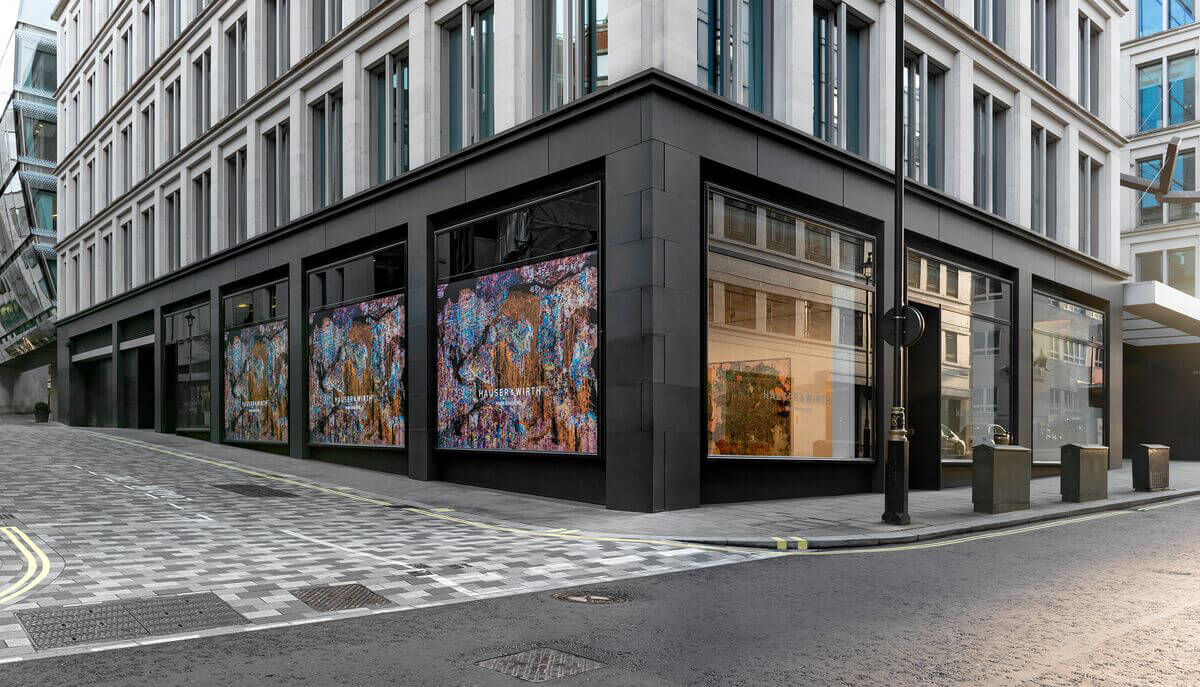
On view in London
Hauser & Wirth opened its first London gallery in 2003, based in a historic building on Piccadilly. In 2010, we opened our current location at 23 Savile Row with two exhibition spaces, showrooms, archive, library, and gallery shop offering an extensive collection of books published by Hauser & Wirth. Arshile Gorky's ‘Blue Figure in Chair’ is on view by appointment at Hauser & Wirth London.

